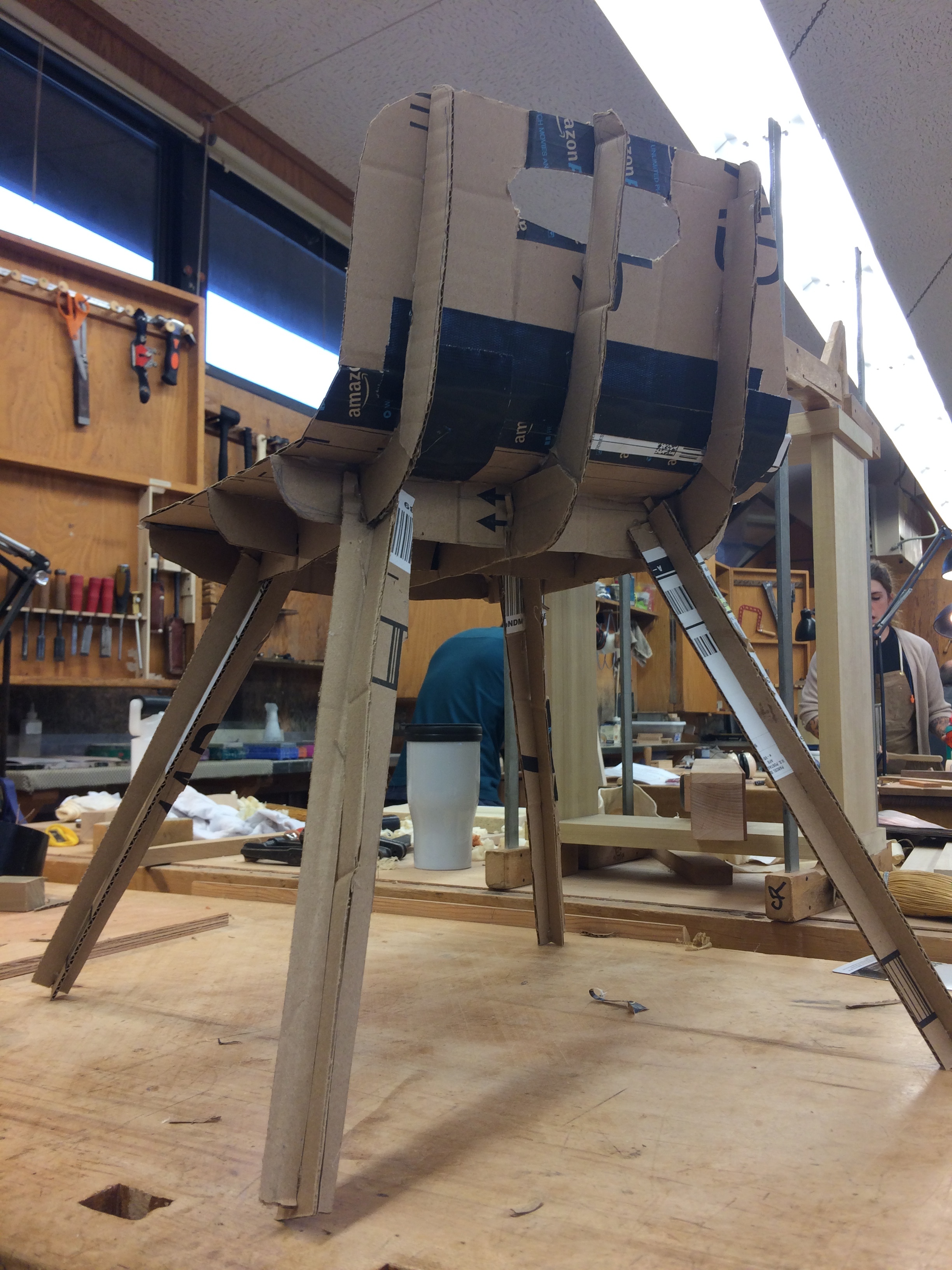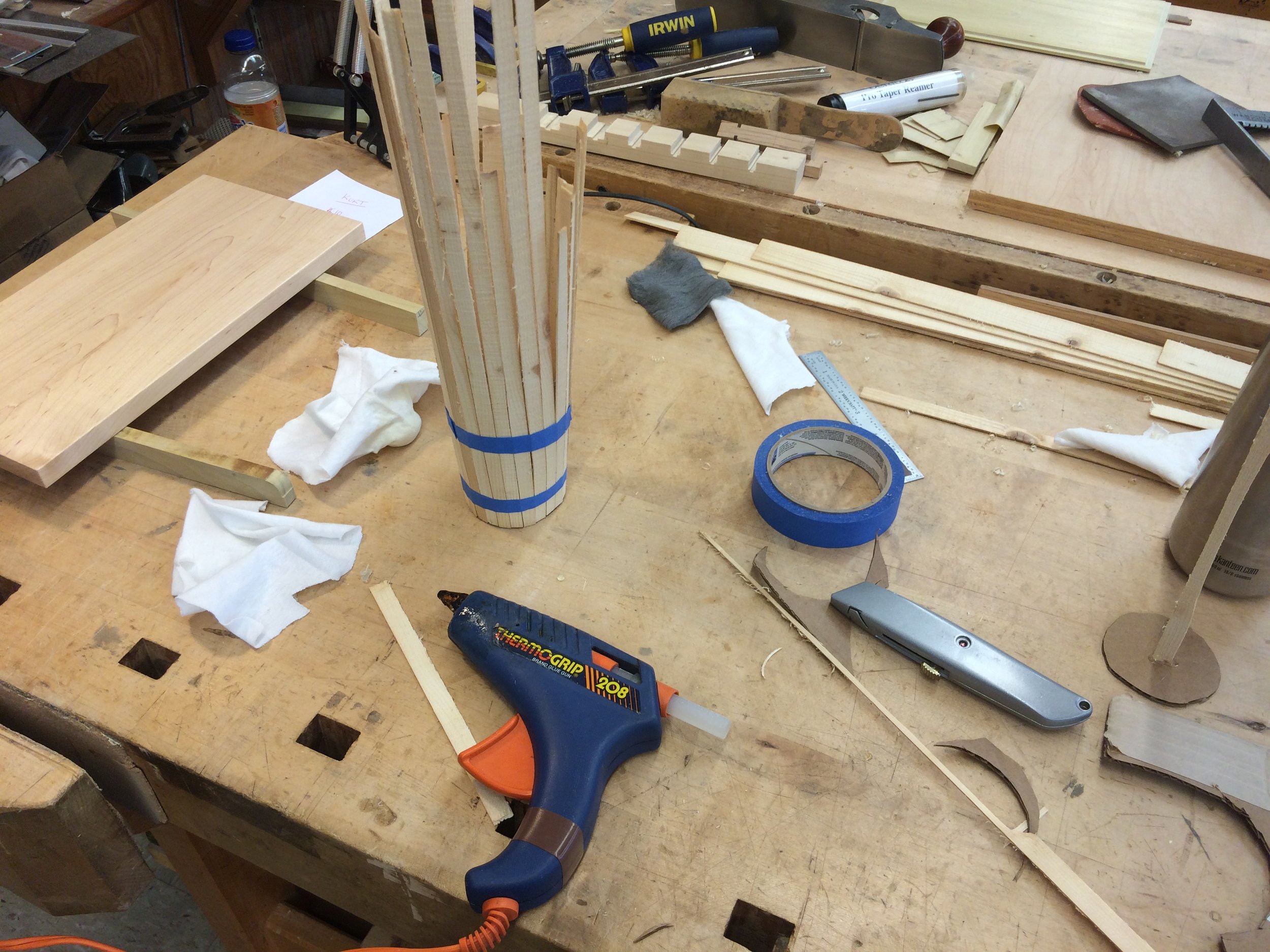Carving out the seat.
User testing with a little help from my friends.



Carving out the seat.

User testing with a little help from my friends.

Based on a German peasant's kitchen stool from the Beidermeier period, I am building a set of children's stools for the first class project. The criteria are four "S's": simple, sweet, solid, and small.


First a cardboard mockup.


Then a Douglas Fir prototype.

A coopered seat.

Turned legs and angled mortise holes (after a few location and angle tweaks).




Always be knolling.














A local wood seller (and CRFW alumnus) came to visit.

I needed a smaller hammer...

...so I made one.

The jointing plane is finished and I am using it on "the perfect board" exercise, putting a ripped board back together along a perfectly jointed edge.


My friend Robert is currently in the San Francisco Police Academy. He told me that they do a lot of push-ups, for all kinds of reasons, but mostly in the this-will-fix-anything kind of way that boot camps employ push-ups. At CRFW, the analogous go-to exercise is sharpening. Plane irons, chisels, saw blades, it does not matter. We are always sharpening something. Because (lesson #2) a sharp tool is the right tool. And because if something is not going right, the solution invariably is to sharpen a tool. If the guys at Premiere Properties had been woodworkers, Blake would have admonished them, "Always. Be. Sharpening."

Sharpening is dirty work.

The smoothing plane takes form and makes shavings.

I remove some mass and go with a more classic shape.

...and it works nicely.

Settling in to workbench #3 and my tool cabinet for the next nine months.
A block of maple for a smoothing plane.

A block of maple for a smoothing plane.

The smoothing plane pinned together, ready for glue-up, with Goncalo Alves sole and Hock plane iron and chip breaker.


The bench room before we took up residence.

When I asked which bench is best, I was told, "whichever one you get." The first lesson at this monastery of wood: it is what you make of it.